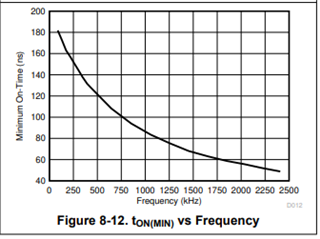Other Parts Discussed in Thread: LM5155
Hi Expert,
LM5155-Q1 is under evaluation on customer side. There are two parameter need confirm with you:
1. for the minimum on-time, there is a typical value, but it doesn't show the max and min value for minimum on-time. Could you check it for us?\

2. For the light load application, datasheet mention that LM5155 will enter pulse skipping mode for light load. Could you share more information or test result for this function?
For the test result on customer side, the PWM frequency is keep changing in light load mode. Thanks
Best Regards
Songzhen Guo



